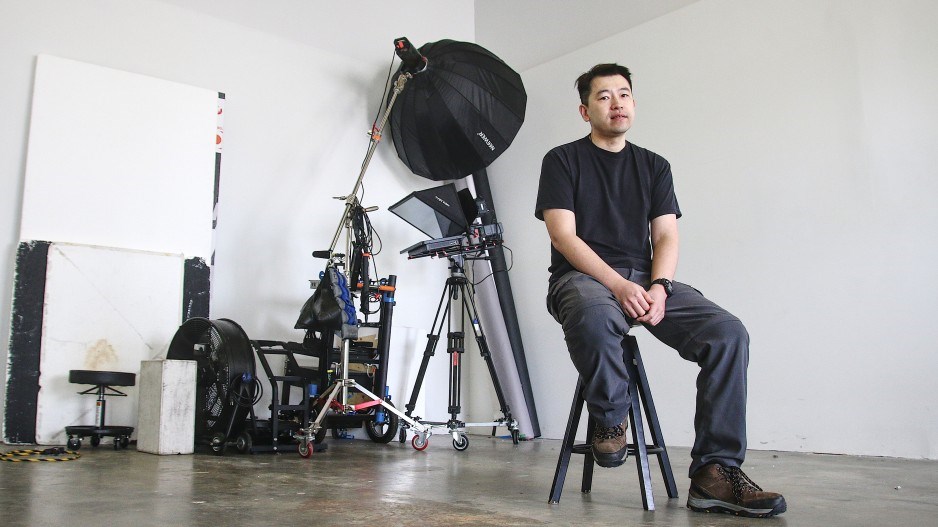Over nearly two decades, a major U.S. television producer made British Columbia – with its beautiful landscape, large film talent pool and favourable tax policies – its home base for TV productions.
The CW Network – an American broadcast company whose name is derived from the first letters of the names of its two founding co-owners, CBS Corp. and Warner Bros. – was responsible for bringing more productions to B.C. than any other company, and employing thousands of workers each year.
Since last year, however, B.C.-based CW Network projects have dramatically decreased – from an average of 10 productions per year, to only two so far in 2023, according to statistics from Creative BC.
“CW is leaving. Many of their productions ended and were never renewed, and there are no new projects coming in,” said Eric Zhang, a Richmond-based film producer and owner of October Studio.
Zhang has many friends who were working on CW productions that haven’t had their contracts renewed and are still waiting or looking for new jobs.
“That leaves a big void to fill in the B.C. film industry given that for a long time, CW has been the biggest player in the market,” said Zhang.
In 2022, CW cancelled or ended 10 productions – three times the average number of shows cancelled or ended annually over the past decade. It also had fewer than average shows renewed compared to previous years.
The company did not provide an explanation for the drop in productions, but many believe that it is connected to its acquisition last year by Nexstar, and the company’s readjusted strategy.
During a conference call in August 2022 following the acquisition, Nexstar president and COO Tom Carter said CW programming is targeted to an audience demographic of those ages 18 to 34, while the average age of a CW broadcast viewer is 58 years. As a result, he said, the company “will be taking a different approach to our CW programming strategy.”
He also noted that CW plans to add more cost-effective unscripted programming and “high-quality syndicated programming” to its lineup, which is “a departure from the prior predominant focus on expensive, original scripted content, which is uncommon among major broadcast networks.”
Capturing the ‘CW effect’
Since its launch in 2006, CW has been deeply rooted in B.C.’s film industry, with many of its popular TV shows filmed on throughout Greater Vancouver, including its well-known superhero series: The Flash, Arrow, Supergirl and Batwoman.
Russ Hamilton, a long-time location manager in Vancouver, worked with the company for 15 years.
“CW was home in Vancouver for a very long time.… There were a lot of opportunities provided by them for local filmmakers. They were a very large employer and stimulated a lot of the economy in the film industry,” recalled Hamilton.
Although the network has had its ups and downs, its work in B.C. was consistent. Creative BC records show that from 2015 to 2022, CW produced seven to 13 TV shows on average every year.
Most CW projects provided six to 10 months of work to around 150 crew members, according to Hamilton, accounting for thousands of workers each year.
“It was a long-standing working relationship. They’d been here forever. They had standing studio space that contracts with people, they had everything in place, so they could just come in and hit the ground running. It was similar to a turnkey operation,” said Hamilton.
CW reached its prime time in 2018 following a $1 billion deal with Netflix Inc. (Nasdaq:NFLX), which offered a new platform for CW shows. The network also saw strong revenue from overseas markets, and enjoyed success with its action-superhero series Arrow, and shows such as The Flash and Dynasty.
This also impacted B.C. – the network produced 12 shows in the province that year alone, and 13 in 2019.
The company then went through a series of changes, ending its the deal with Netflix in 2019 and moving its content to its own streaming services. Its acquisition by Nexstar followed.
Time for an industry reset
CW’s pullback has resulted in fewer jobs being offered in B.C.’s film and television industry. As a result, some – particularly those with less experience – are facing less work or lower rates of pay as the market adjusts.
“I’m not positive for the near future of the industry – the void will take years to fill. We will just not have as much work as we had in previous years,” said Zhang.
Although no single company has yet to match the scale and scope of CW’s peak B.C.-based activity, other production companies are catching up.
In 2022, Netflix had nine productions in B.C., including eight TV series and a mini-series, making it the second-largest producer in B.C. after CW. The role it plays in the province may change, however, as the streaming giant recently announced its intention to restructure its movie division to “make fewer original movies to increase quality.”
Walt Disney Studios Motion Pictures and Disney+ had seven productions last year in B.C., while Amazon.com (Nasdaq:AMZN) had five and Apple (Nasdaq:AAPL) had three.
“Our industry is forever evolving and forever changing. And there’s always going to be studios come and go. I fully believe we are going to be able to be full and busy again,” said Hamilton, adding that it might be time for B.C.’s film industry to press the reset button.
“For those of us who work for CW forever, we were paid well, and we have to accept that maybe we’re not going to get those rates anymore. And that’s a tough pill to swallow,” he said.
“We’ve been overfed and now we’re going to be a little bit of attrition. At a certain point, attrition is important and sometimes an evolutionary thing. I think that’s an unfortunate part of it, but it’s definitely part of our industry.”




